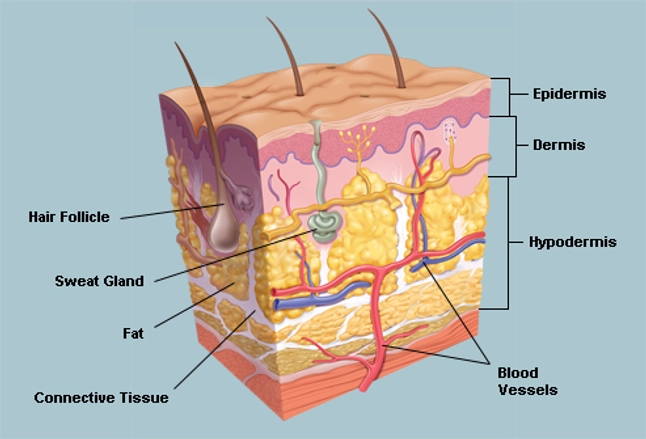
kali nie #BeautyMadnessWithBabyNurul nak buat sharing sikit.
erm... this one basic things dulu la ye..
heee.. sama sama kita kumpul ilmu..
korang boleh rujuk Skin Part 1 untuk tahu pasal kulit dan fungsi kulit..
dan post kali ini.. i nak fokus pada epidermis sahaja..
supaya kita lebih faham mengenai kulit kita...
Skin (Part 2) - Epidermis

◎ the outermost layer of skin and creates our skin tone.
◎ It forms the waterproof, protective wrap over the body's surface which also serves as a barrier to infection and is made up of stratified squamous epithelium with an underlying basal lamina.
◎ The epidermis contains no blood vessels, and cells in the deepest layers are nourished almost exclusively by diffused oxygen from the surrounding air and to a far lesser degree by blood capillaries extending to the outer layers of the dermis.
◎ The main type of cells which make up the epidermis are Merkel cells, keratinocytes, with melanocytes and Langerhans cells also present.
◎ The epidermis can be further subdivided into the following strata (beginning with the outermost layer):
- corneum,
- lucidum (only in palms of hands and bottoms of feet),
- granulosum,
- spinosum,
- basale.
◎ Cells are formed through mitosis at the basale layer. The daughter cells (see cell division) move up the strata changing shape and composition as they die due to isolation from their blood source. The cytoplasm is released and the protein keratin is inserted. They eventually reach the corneum and slough off (desquamation). This process is called "keratinization". This keratinized layer of skin is responsible for keeping water in the body and keeping other harmful chemicals and pathogens out, making skin a natural barrier to infection.
◎ The epidermis helps the skin to regulate body temperature.
◎ The outermost layer of the epidermis consists of 25 to 30 layers of dead cells.
About 70% of all human protein-coding genes are expressed in the skin. Almost 500 genes have an elevated pattern of expression in the skin. There are less than 100 genes that are specific for the skin and these are expressed in the epidermis. An analysis of the corresponding proteins show that these are mainly expressed in keratinocytes and have functions related to squamous differentiation and cornification.
Love,
Ladybie
No comments:
Post a Comment